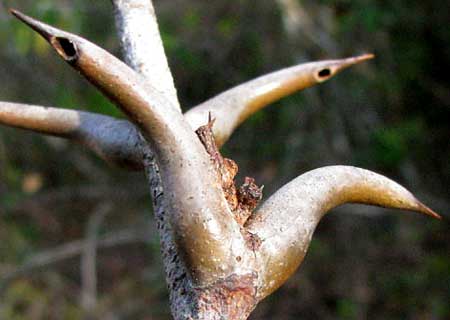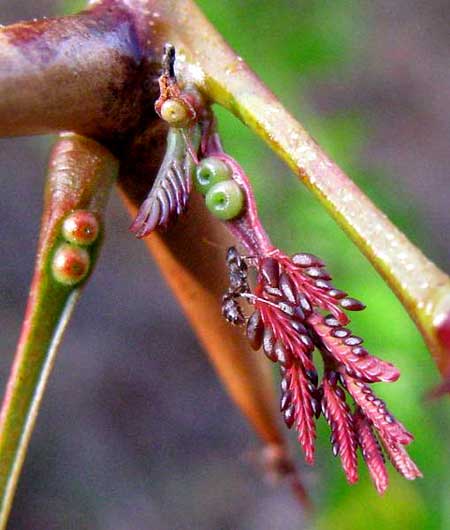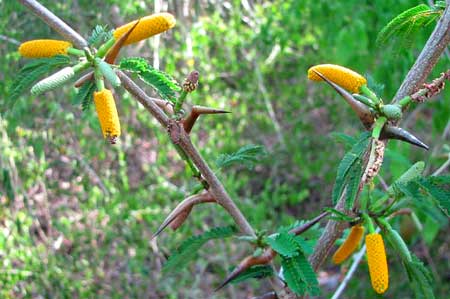
Especially during the dry season when many trees and bushes in the Yucatan lose their leaves you're likely to see what's shown below.

That's one of a couple of trees found in the Yucatan known as Bull-Horn Acacia. It's Acacia collinsii, or Subín in Maya. Below, a close-up of some thorns shows what's bull-hornish about them.

In that picture notice that two of the 2-¾-inch long (4cm) spines bear holes near their tips. Ants chew the holes into the thorns, then enter and live inside. A single ant colony may reside in several adjacent Bull-Horns. If a herbivore comes along disturbing the tree, the ants rush onto the animal and bite. Thus it's a mutualistic relationship, with both tree and ant benefiting.

The tree not only shelters the ants but also feeds them, as you can see above. Acacia leaves are bipinnate, so the entire feathery, purplish structure in the picture's lower right quarter is a very young leaf about to expand. At the top, left of the leaf the shoehorn-like thing with two green-doughnut-like items in the horn is the leaf's stem, or petiole, and the green doughnuts within the petiole's concavity are glands producing sweet, energy-rich nectar that ants feed on.
Also notice that many of the leaves' ultimate leaflets bear teardrop-shaped, dark purple, shiny things. Those are Beltian bodies, which are protein-rich structures eaten by the ants. Once the leaves are fully expanded, the Beltian bodies will have been eaten and there won't be a sign of them left.
Bull-Horn Acacias also have interesting flower heads, as shown below.
